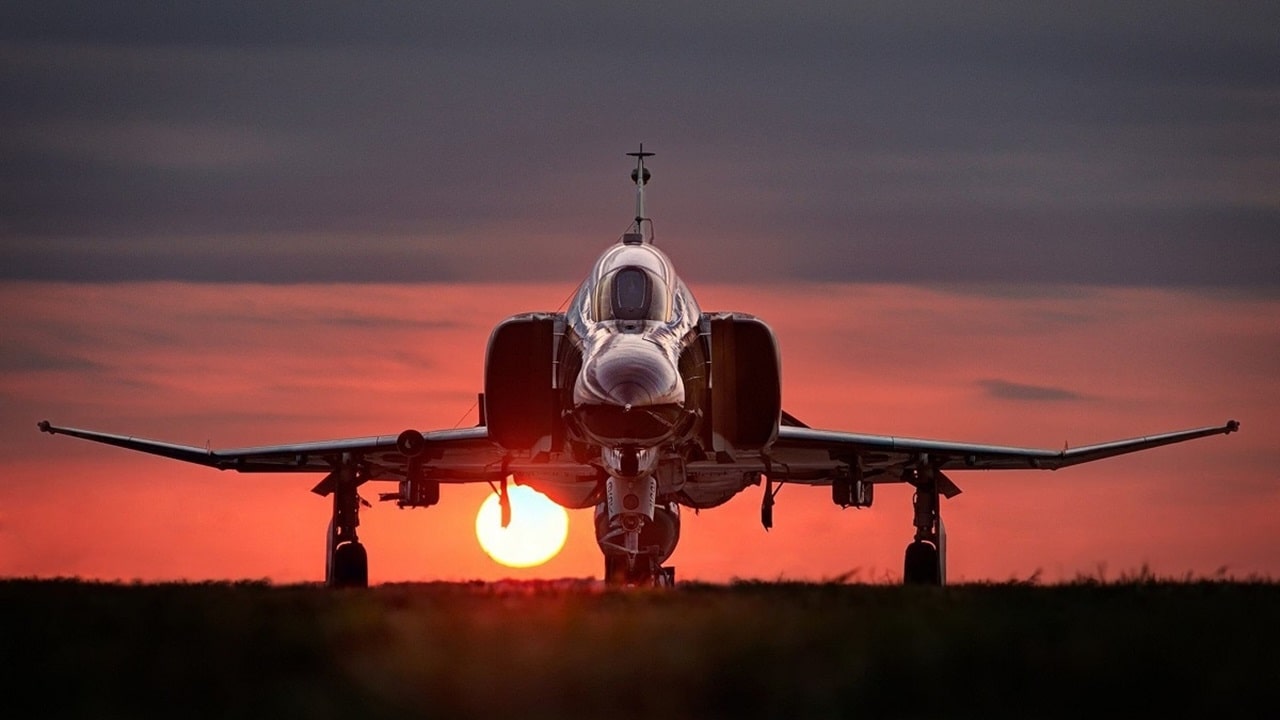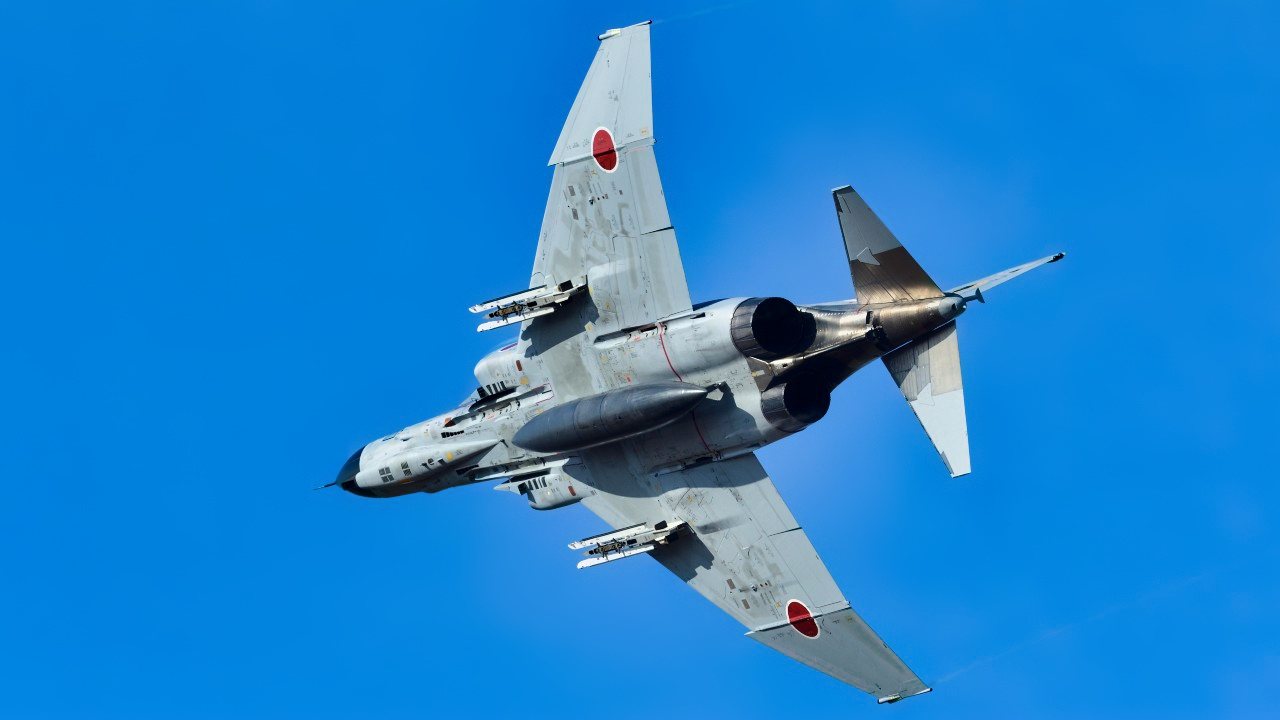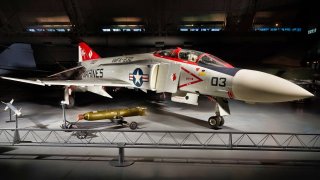1,737 Warplanes Destroyed: The Real Reason America Lost the Vietnam War
A total of 1,737 U.S. fixed-wing aircraft were lost in combat during the war, including 40 percent of the total production of F-105 Thunderchiefs and one out of every eight F-4 Phantoms ever made. Two-thousand five-hundred eighty U.S. Air Force personnel lost their lives.
Summary and Key Points: Logan Nye's article revisits the restrictive rules of engagement (ROE) imposed on U.S. combat aviators by President Lyndon B. Johnson during the Vietnam War, which severely hampered their effectiveness.

-These rules prevented preemptive strikes against enemy anti-aircraft units, contributing to significant American losses.
-Under President Nixon, more aggressive tactics, exemplified by Operation Linebacker II, significantly shifted the war's dynamics.
-The lesson learned carried into the 1991 Persian Gulf War, where President George H.W. Bush allowed military leaders to conduct operations with minimal interference, resulting in the successful and decisive Operation Desert Storm.
A somewhat recent article comments on the absolutely ludicrous rules of engagement (ROE) imposed on American combat aviators by Lyndon B. Johnson during the Vietnam War.
The article in question, written by Logan Nye for We Are The Mighty, doesn’t offer a new premise. But seeing how this year marks the 50th anniversary of the official end of America’s involvement in the Vietnam War, his timing is certainly apropos.
Ceding the Initiative in Vietnam
In his bestselling 1995 mea culpa autobiography In Retrospect, Robert S. McNamara — secretary of defense under both JFK and LBJ — claimed that the latter president’s “instructions were clear: ‘Win!’” But the actions of McNamara and LBJ belied the expressed desire to win.
The on-paper technological superiority of American warplanes like the F-4 Phantom — which garnered sixteen world speed and altitude records between 1959 and 1962, and held five of those records until the advent of the F-15 Eagle in 1975 — was negated by arbitrary ROEs that gave a distinct advantage to the enemy and wasted the lives of American aircrews. How so? By allowing the North Vietnamese Communists to take the initiative during American air raids.
LBJ and McNamara dictated that our fighter and bomber crews couldn’t proactively hunt the Communists’ anti-aircraft units — their anti-aircraft artillery guns and surface-to-air missiles (SAM). Our flyboys couldn’t even attack the gun batteries and SAM sites until the enemy unit fired, or at least activated radar against them. In other words, never bleeping mind that we’re already actively engaged in a shooting war, we’re going to allow the enemy to fire the first shot every time.

Johnson even went so far as to brag that no single piece of ordnance could be placed on an American warplane in Vietnam without his personal approval.
Talk about micromanagement. And talk about murdering your own countrymen and wasting your material assets: A total of 1,737 U.S. fixed-wing aircraft were lost in combat during the war, including 40 percent of the total production of F-105 Thunderchiefs and one out of every eight F-4 Phantoms ever made. Two-thousand five-hundred eighty U.S. Air Force personnel lost their lives.
Along Came Kissinger and Nixon
LBJ’s White House successor, Richard M. Nixon, finally allowed American aviators to take the proverbial gloves off in their prosecution of the Vietnam War effort.
The difference became most glaringly obvious at the strategic level, specifically Operation Linebacker II, the so-called “Christmas bombing” of Hanoi in December 1972 that sent the North Vietnamese back to the peace table and nearly won the war for America.
But it applied at the tactical level as well, to fighter jocks as well as B-52 “BUFF” bomber drivers. This was thanks in no small part to U.S. Air Force Maj. Gen. John D. Lavelle, then commander of the Seventh Air Force.
“Lavelle went to the Pentagon for permission…He says that approval came, with a caveat. Nixon was working on thawing relations with China in 1972. The Pentagon supported Lavelle coming up with his own ‘interpretation’ of the rules. ‘Secretary [of Defense Melvin] Laird told me he agreed, but the climate was just not right in Washington for any changes,’ Lavelle said. ‘He told me I should make a liberal interpretation of the rules of engagement in the field and not come to Washington and ask him, under the political climate, to come out with an interpretation; I should make them in the field, and he would back me up’…Lavelle came up with, ‘Yup, you can attack the guns under certain conditions,’ and his men destroyed 11 guns. They got a special thank you from the Thai prime minister on the same day Lavelle’s boss fired him.”
Lavelle may have been fired, but he still retired honorably from the Air Force with two stars on his shoulder boards. And soon enough, the official ROEs were changed for the better and made Operation Linebacker II possible.
Lesson Learned
Fast-forward to the 1991 Persian Gulf War, AKA Operation Desert Storm, and luckily America again had a POTUS in George H.W. Bush, who, like Richard Nixon, took to heart the need to let his generals fight the war as the latter saw fit — with minimal White House meddling. Thus, it was that Air Force Gen. Chuck Horner, commander of U.S. and coalition allies’ air assets during that war, was able to wage “Instant Thunder,” a refreshing contrast to the gradualism of LBJ’s “Rolling Thunder” — not only in semantics, but in terms of speed, intensity, ferocity, accuracy, and most importantly, freedom of decision-making, from Gen. Horner on down to the individual coalition fighter and bomber crews doing the actual fighting, killing, and dying.

The contrasting final results of “Instant Thunder” vs. “Rolling Thunder” speak for themselves.
Author Expertise
Christian D. Orr is a former Air Force Security Forces officer, Federal law enforcement officer, and private military contractor (with assignments worked in Iraq, the United Arab Emirates, Kosovo, Japan, Germany, and the Pentagon). Chris holds a B.A. in International Relations from the University of Southern California (USC) and an M.A. in Intelligence Studies (concentration in Terrorism Studies) from American Military University (AMU). He has also been published in The Daily Torch and The Journal of Intelligence and Cyber Security. Last but not least, he is a Companion of the Order of the Naval Order of the United States (NOUS).


